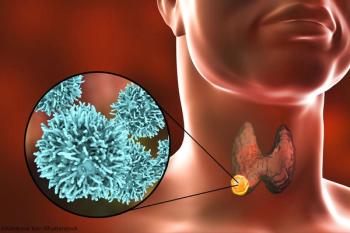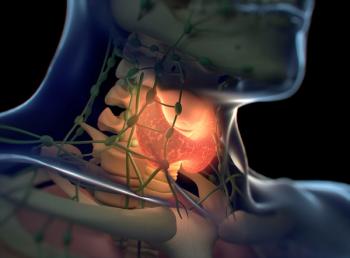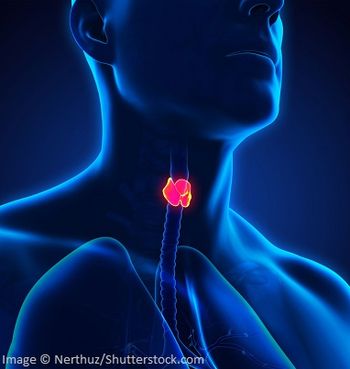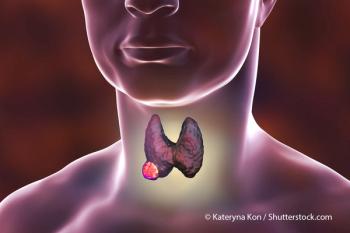
Adequate Lymph Node Yield for Papillary Thyroid Cancer Calculated
Researchers have established estimates of occult nodal disease risk in patients after surgery for papillary thyroid cancer, using primary tumor stage and the number of lymph nodes examined.
Researchers have established empirically based estimates of occult nodal disease risk in patients after surgery for papillary thyroid cancer, using primary tumor stage and the number of lymph nodes examined. Specifically, a study found that in order to rule out occult nodal disease with 90% confidence, patients with T1b disease need 6 nodes examined; patients with T2 disease, 9 nodes examined; and patients with T3 disease, 18 nodes examined.
“These objective risk estimates could be used to guide the determination of adequacy of the lymph node yield, particularly for patients with low-, intermediate-, and high-risk tumors, as well as the need for adjuvant radioactive iodine and surveillance in patients for whom treatment is not currently standardized and for whom substantial nonclinical (eg, geographic, practice level) variation exists,”
According to Robinson and colleagues, patients with papillary thyroid cancer who undergo thyroidectomy with limited lymph node examination are thought to be at increased risk for harboring occult disease. However, to date, no study has tried to quantify this risk.
Here, the researchers used data from the National Cancer Database from 1998 to 2012, examining 78,724 patients with localized 1-cm or greater papillary thyroid cancer who underwent surgery and had one or more lymph nodes examined. The researchers estimated the probability of occult nodal disease as a function of total number of lymph nodes examined and pathologic tumor stage.
Of the total cohort, 49.1% of patients had node-positive disease. These patients were significantly more likely to undergo adjuvant radioactive iodine treatment than patients with node-negative disease (69.6% vs 58.3%; P < .001). Those patients who underwent surgery and had only one lymph node examined had an estimated false-negative rate of 53% compared with < 10% among patients with six or more lymph nodes examined.
“Our estimates suggest that six, nine, and 18 lymph nodes would need to be removed to ensure a reasonably adequate lymph node evaluation across all clinical scenarios for patients with T1b, T2, and T3 disease, respectively,” wrote the researchers. “These estimates are meant to provide an objective determination of adequacy of the lymph node yield for patients with papillary thyroid cancer and to help standardize the interpretation of prophylactic central lymph node dissection.”
Newsletter
Stay up to date on recent advances in the multidisciplinary approach to cancer.

















































































